DOGWOOD
We have a native species and at least two introduced species.
DOGWOOD with red stems : Cornus sanguinea
This is our native species. Below you will find the Siberian Dogwood for comparison.
Also see bird cherry tree : index.asp?pageid=732577
In spring this tree produces sprays of creamy, almost white flowers. These have four elongated petals in the shape of a cross.
By July these have transformed into dark blue-black berries with a slightly slivery dusty sheen. They look much like blaeberries. For some time they retain something of their flower stalks protruding from their outer ends. The main stalks are red to cream.
The leaves are strongly veined.
But all that is the summer guise. In winter it can appear quite different.
In winter these shrubs lose their foliage. This exposes bright red stems. Quite a contrast from in summer when they become dark, almost black. The red stems are actually quite dramatic in their own right. And then as the weather improves towards spring, new leaves start to appear.
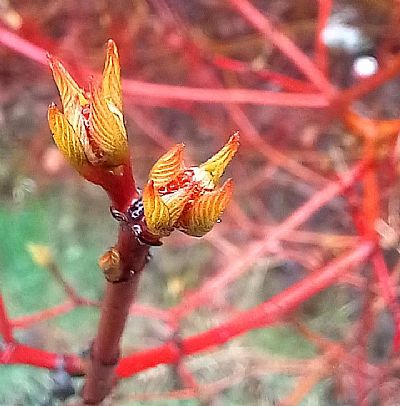
The stems are distincly red, but so are the emerging leafs.
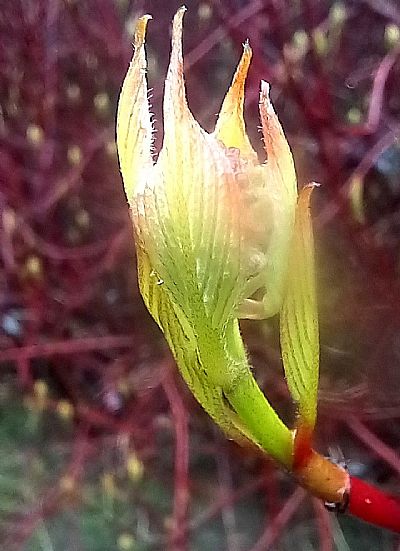
The leafs turn green as they grow.
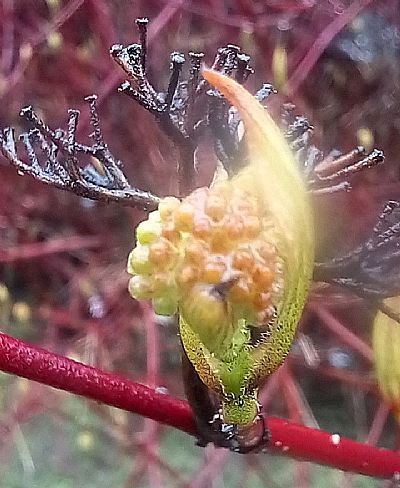
Signs of new flowers. The stalks from the berries of last summer remain as bare black fingers in the background.
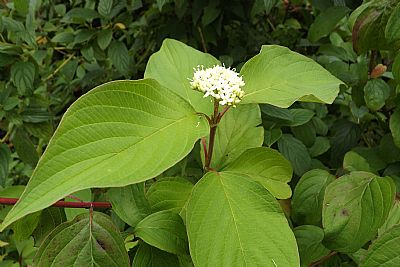
This tree is still producing new flowers while the berries are maturing.
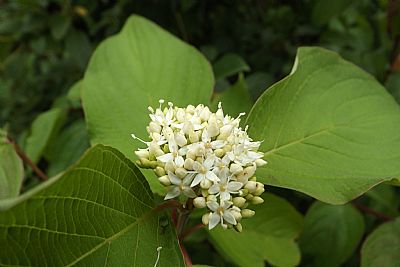
The attractive flowers form crosses of four petals.
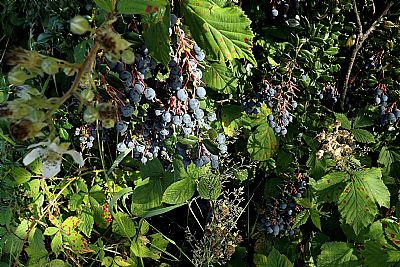
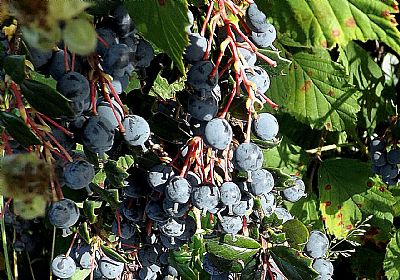
This example is within the Lomond Industrial Estate. Leaves of other plants can be seen amongst those of the dogwood.
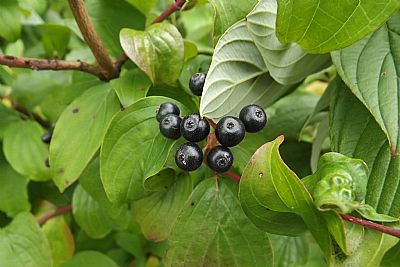
It is mid-August and the berries are fully ripe.
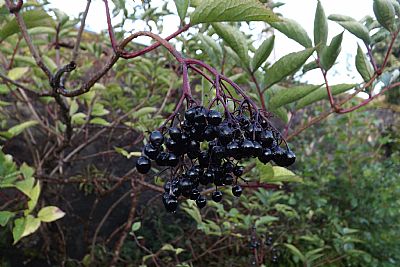
As we enter October the leaves are thinning out and the black berries are all the more conspicuous.
DOGWOOD with yellow stems : Cornus Yellow Flaviramea
You will probably only notice the difference between that and the species above in winter. Once it sheds its leafs, its distincly yellow stem become conspicuous. It is often planted amongst the red stemmed variety and the contrasts in colours can be very attractive.
SIBERIAN DOGWOOD : Cornus alba
Also known as red-barked or white dogwood.
In spite of its botanical name, this is an introduced species and is included here for comparison with our native one. Alba in this instance is the Latin for "white".
It is very similar to our native dogwood, but has two obvious constrasting features. Its stalks are very red and are most conspicuous in winter when the leaves fall. Its berries are white.
As Wikipedia notes : Cornus alba, the red-barked, white or Siberian dogwood, is a species of flowering plant in the family Cornaceae, native to Siberia, northern China and Korea.
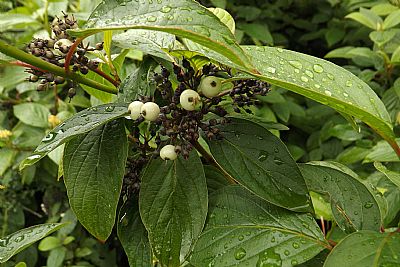
The berries may start off small and dark, but are white when fully developed. Lomond Industrial Estate. July.
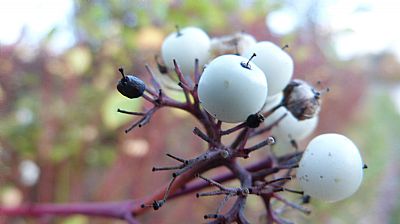
The white berries (with some old ones that have withered) seen on the banks of the Leven at the Cordal Loop in November.
WIKPEDIA : https://en.wikipedia.org/wiki/Cornus_alba
WOODLAND TRUST : https://www.woodlandtrust.org.uk/trees-woods-and-wildlife/british-trees/a-z-of-british-trees/dogwood/

